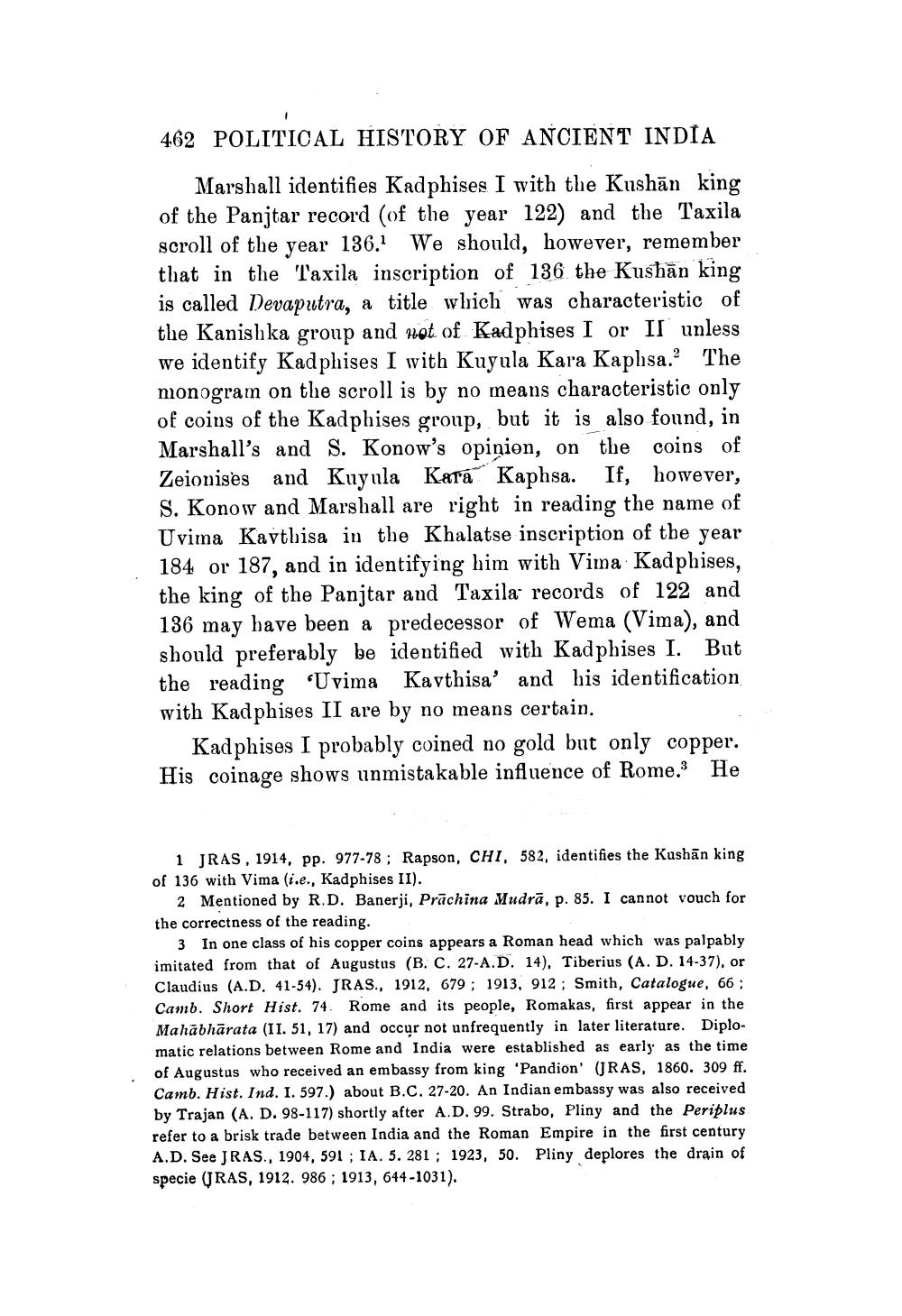________________
462 POLITICAL HISTORY OF ANCIENT INDIA
Marshall identifies Kadphises I with the Kushān king of the Panjtar record (of the year 122) and the Taxila scroll of the year 136. We should, however, remember that in the Taxila inscription of 136 the Kushān king is called Devaputra, a title wlrich was characteristic of the Kanishka group and not of Kadphises I or II unless we identify Kadphises I with Kuyula Kara Kaphsa. The monogram on the scroll is by no means characteristic only of coins of the Kadphises group, but it is also found, in Marshall's and S. Konow's opinion, on the coins of Zeionises and Kuyula Kata Kaphsa. If, however, S. Konow and Marshall are right in reading the name of Uvima Kavthisa in the Khalatse inscription of the year 184 or 187, and in identifying him with Vima Kadphises, the king of the Panjtar and Taxila records of 122 and 136 may have been a predecessor of Wema (Vima), and should preferably be identified with Kadphises I. But the reading "Uvima Kavthisa' and his identification with Kadphises II are by no means certain.
Kadphises I probably coined no gold but only copper. His coinage shows unmistakable influence of Rome. He
1 JRAS, 1914, pp. 977-78 ; Rapson, CHI, 582, identifies the Kushān king of 136 with Vima (i.e., Kadphises II).
2 Mentioned by R.D. Banerji, Prāchina Mudrā, p. 85. I cannot vouch for the correctness of the reading.
3 In one class of his copper coins appears a Roman head which was palpably imitated from that of Augustus (B, C. 27-A.D. 14). Tiberius (A. D. 14-37), or Claudius (A.D. 41-54). JRAS., 1912, 679; 1913, 912; Smith, Catalogue, 66; Camb. Short Hist. 74. Rome and its people, Romakas, first appear in the Mahābhārata (11. 51, 17) and occur not unfrequently in later literature. Diplomatic relations between Rome and India were established as early as the time of Augustus who received an embassy from king 'Pandion' (JRAS, 1860. 309 ff. Camb. Hist. Ind. I. 597.) about B.C. 27-20. An Indian embassy was also received by Trajan (A. D. 98-117) shortly after A.D. 99. Strabo, Pliny and the Periplus refer to a brisk trade between India and the Roman Empire in the first century A.D. See JRAS., 1904, 591 ; IA. 5. 281 ; 1923, 50. Pliny deplores the drain of specie (JRAS, 1912. 986 ; 1913, 644-1031).




